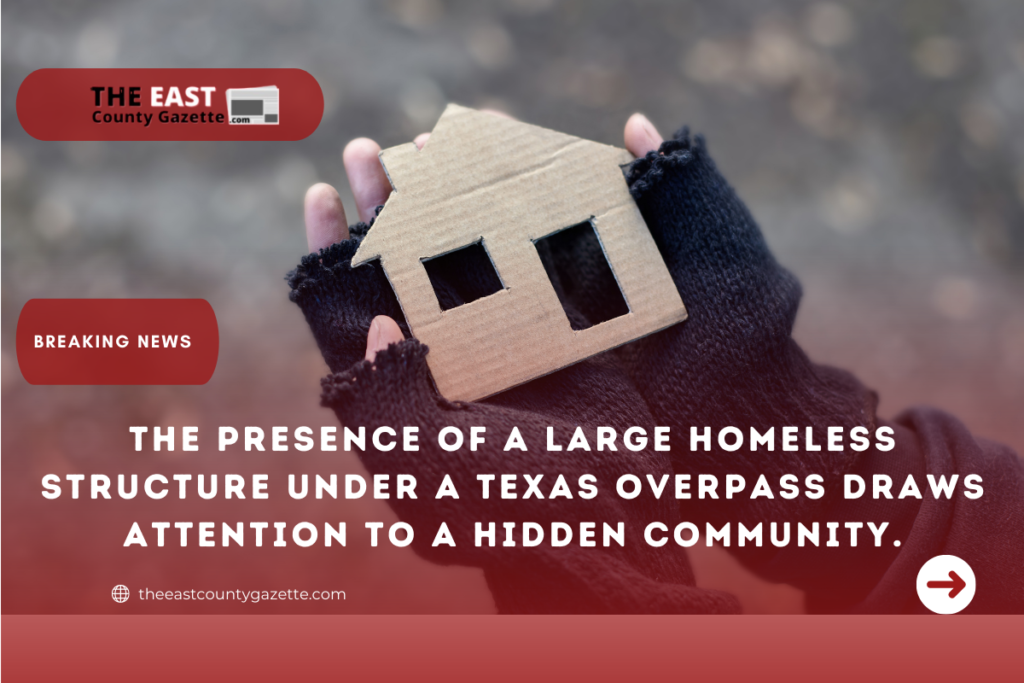Several homeless people in Austin, Texas, relocated from under highways and overpasses after a citywide camping ban was implemented in 2021. However, a recent video indicates that some people are becoming more resourceful.
A building under a north Austin overpass near Braker Lane and the MoPac Expressway was captured on video and shared on social media. Aside from having wood floors and a huge living room, it also has a storage area for bicycles and other equipment.

While organizations that advocate for and assist the homeless, such as “We Can Now,” have provided supplies and food to those in need for years, the organization’s CEO, Antony Jackson, says that since the camping ban, many individuals are seeking refuge wherever they can find it.
According to Jackson, “Absolutely, we have seen things like that because it is still a viable construction.” ‘We have to recognize that for these individuals, our unhoused population, every single day is a battle for survival.
This is the kind of weather they are dealing with. That is what we call food. That is, hygiene, water, clothing, and all of the other necessities that we as human beings require on a daily basis.
“We Can Now” provides a once-a-week meal to the homeless population. Since the camping ban was implemented, they have begun to venture into the woods to provide services to their customers.
According to Jackson, “a lot of people wanted them to stay out of the public eye, but it doesn’t solve the problem, so now you can see that we have a significant population of them in the woods.”
According to KXAN, the Texas Department of Transportation has stated that highways and underpasses are not safe places for people to live or travel.
In 2014, a person who was sleeping under a highway underpass near U.S. 183 perished after falling 15 feet from his or her resting position.
Read More: Tsunami Warnings Issued for the West Coast, While Texas Issues High Fire Danger
Additionally, fire can be hazardous and cause damage to highways. Damage to a flyover that connects East Ben White Boulevard and I-35 in south Austin was caused by a fire that broke out at an encampment in 2021.
“We Can Now” provides a once-a-week meal to the homeless population. Since the camping ban was implemented, they have begun to venture into the woods to provide services to their customers.
According to Jackson, “a lot of people wanted them to stay out of the public eye, but it doesn’t solve the problem, so now you can see that we have a significant population of them in the woods.”
According to KXAN, the Texas Department of Transportation has stated that highways and underpasses are not safe places for people to live or travel.
In 2014, a person who was sleeping under a highway underpass near U.S. 183 perished after falling 15 feet from his or her resting position.
Additionally, fire can be hazardous and cause damage to highways. Damage to a flyover that connects East Ben White Boulevard and I-35 in south Austin was caused by a fire that broke out at an encampment in 2021.
Enforcement of the ordinance is being carried out in conjunction with municipal partners such as Parks & Recreation, Public Works, Austin Resource Recovery, and Watershed Protection, who are collaborating with those who have been harmed by the situation.
Individuals suffering homelessness can receive assistance from the city’s Homeless Outreach Street Team and Downtown Austin Community Court social workers, who work together to ensure that they have access to services.
Meanwhile, over 150 people living in the city’s most dangerous encampments have been relocated to rooms at city-owned bridge shelters and linked to long-term housing as part of the HEAL Initiative, which was established to combat unsheltered homelessness in the city of Austin.
In 2021, the City of Austin and its partner agencies were successful in placing more than 1,700 people in housing and removing them from homelessness.
According to the Texas Department of Transportation, the city is responsible for the removal of encampments under roadways inside city borders.
A spokesperson for Austin Public Works informed KXAN that they clean 58 different areas on a monthly basis. Because of the strict enforcement of the camping restriction, not all areas require cleaning every month. Every location in the rotation is checked once a month by a trained professional.
According to KXAN, there were 602 site cleanups in 2021, and so far in 2022, there have been seven cleanups at different locations.

